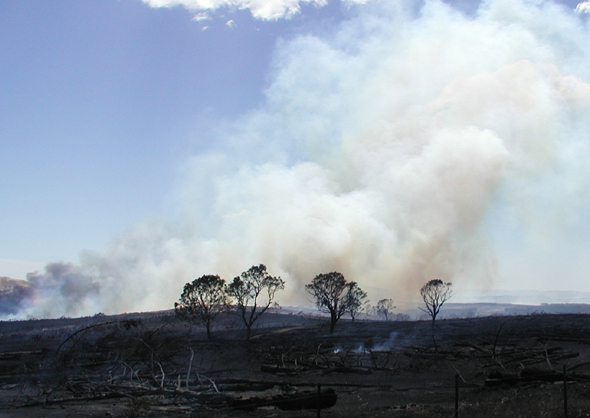[Posters]
[Science]
.
| General learning outcome: | GENERAL FIRE CONCEPTS: | Specific learning outcome: | A fire's scale determines what drives a fire's behaviour. | Topic: | The five main fire scales, their properties, their threats and the options for them to persist, escalate or decay during a work shift. |
Operational Awareness for Advanced Firefighters & Fire Behaviour Analysts
Fires fall into one of five size classes. Small fires are only on their site of origin. Medium fires have spread onto the surrounding landform. Large fires are onto adjacent landform elements. Very large fires are on a number of landform elements. As each landform element presents different weather and slope effects, the more such elements are involved the more complex the fire becomes. Very large fires respond to different components of the weather than do smaller fires. If a very large fire escalates it can become an extreme or plume-driven fire.
Small and medium fire respond only to surface conditions, and are termed surface fires.
Large and very large fires may respond to conditions up to the mixing depth, and are termed mixed fires.
Extreme fires may respond to conditions across the troposphere, and are termed coupled fires.
A local landform element may be important for a medium fire but 'lost in the wash' for a very large fire. Thus crew need to know the context of their sector.

A medium size fire. [McRae]

A large size fire. [McRae]
.